The Scotch Game is an opening move for White that looks to attack the center and create an opening attacking game.
The opening got its name from a correspondence match between London and Edinburgh in 1824, and since then, it has been employed by players of all skill levels, from beginners to grandmasters.
The main idea of the Scotch is to aggressively fight for dominance of the center early on in the game. White tries to remove and neutralize Black’s influence in the center.
The Scotch Game starts after the moves 1. e4 e5 2. Nf3 Nc6 3. d4.
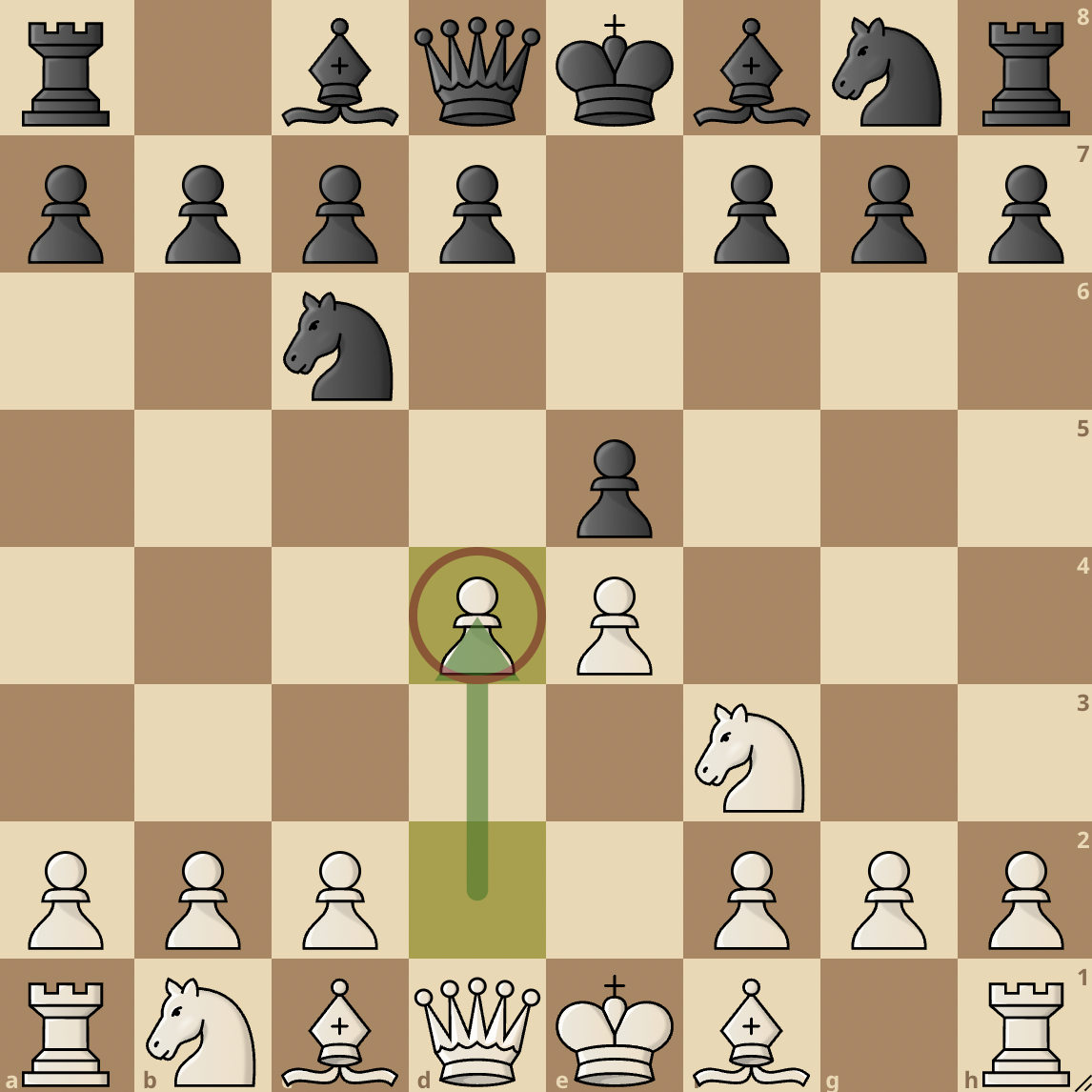
With d4, White attacks the center and forces Black to either capture the d4 pawn or have a passive game. 1. d4 ensures that White gets an immediate spatial advantage.
One advantage of the Scotch Game is that it does not have as much theory as other e4 openings like the Ruy Lopez, therefore, it is much easier to play.
The main variations in the Scotch Game are:
- Classical Variation
- Schmidt Variation
- Scotch Gambit
- Goring Gambit
- Malaniuk Variation
Let’s take a look at each of them.
Classical Variation
1. e4 e5 2. Nf3 Nc6 3. d4 exd4 4. Nxd4 Bc5

The Classical variation starts after Black captures the d4 pawn with 3…exd4. White will then recapture with 4. Nxd4 and Black now plays 4…Bc5, threatening the knight and forcing White to make a decision.
The best move for White here is to play 5. Be3, develop their bishop and protect the threatened knight. Capturing the c6 knight doesn’t do White much good. While it doubles Black’s pawns, Black can capture with …bxc6 and have more than enough support for a …d5 thrust that will put pressure on White’s center.
Moving the knight from d4 also does not give White any advantage. This is because, by moving the knight again in the opening without gaining any clear advantage, White is just wasting tempo. The best move after …Bc5 is for White to play 5. Be3.
Be3 also sets up a potential trap. If Black continues with …Nf6, White will play Nxc6, capturing Black’s knight and attacking their queen.
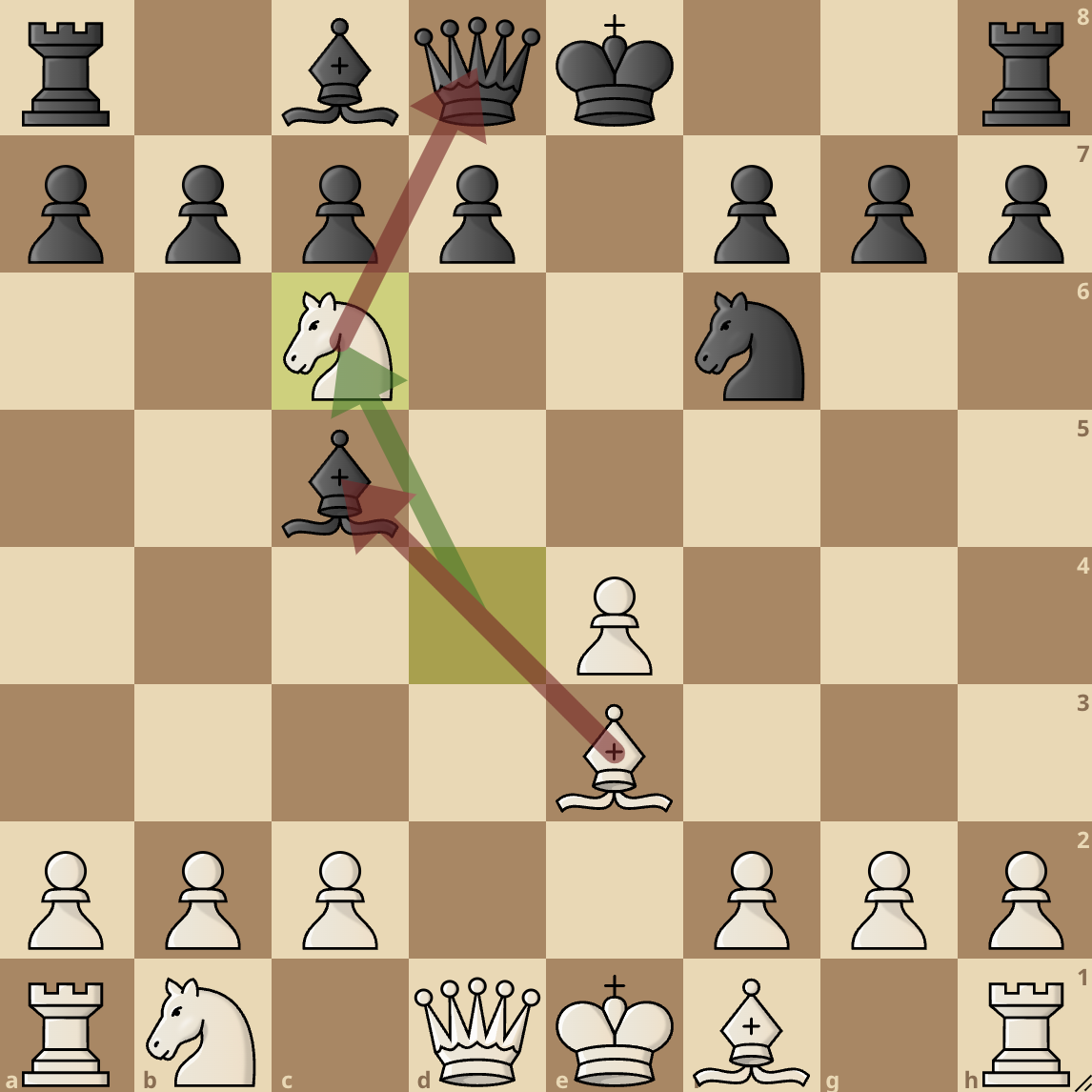
Black has to respond and after they recapture the White knight, the bishop on c5 is hanging and White will simply capture it for free.
To prevent any tricks from White after Be3, Black continues with 5…Qf6. What …Qf6 does is that it now defends the c6 knight so if White decides to capture it, Black will recapture with the queen and protect their c5 bishop.
The queen from f6 also attacks the white knight on d4, so White defends their knight with 6. c3. Black now continues with 6…Nge7 and White develops their bishop with 7. Bc4. Black now goes 7…Ne5, attacking the bishop on c4, so White retreats with 8. Be2.
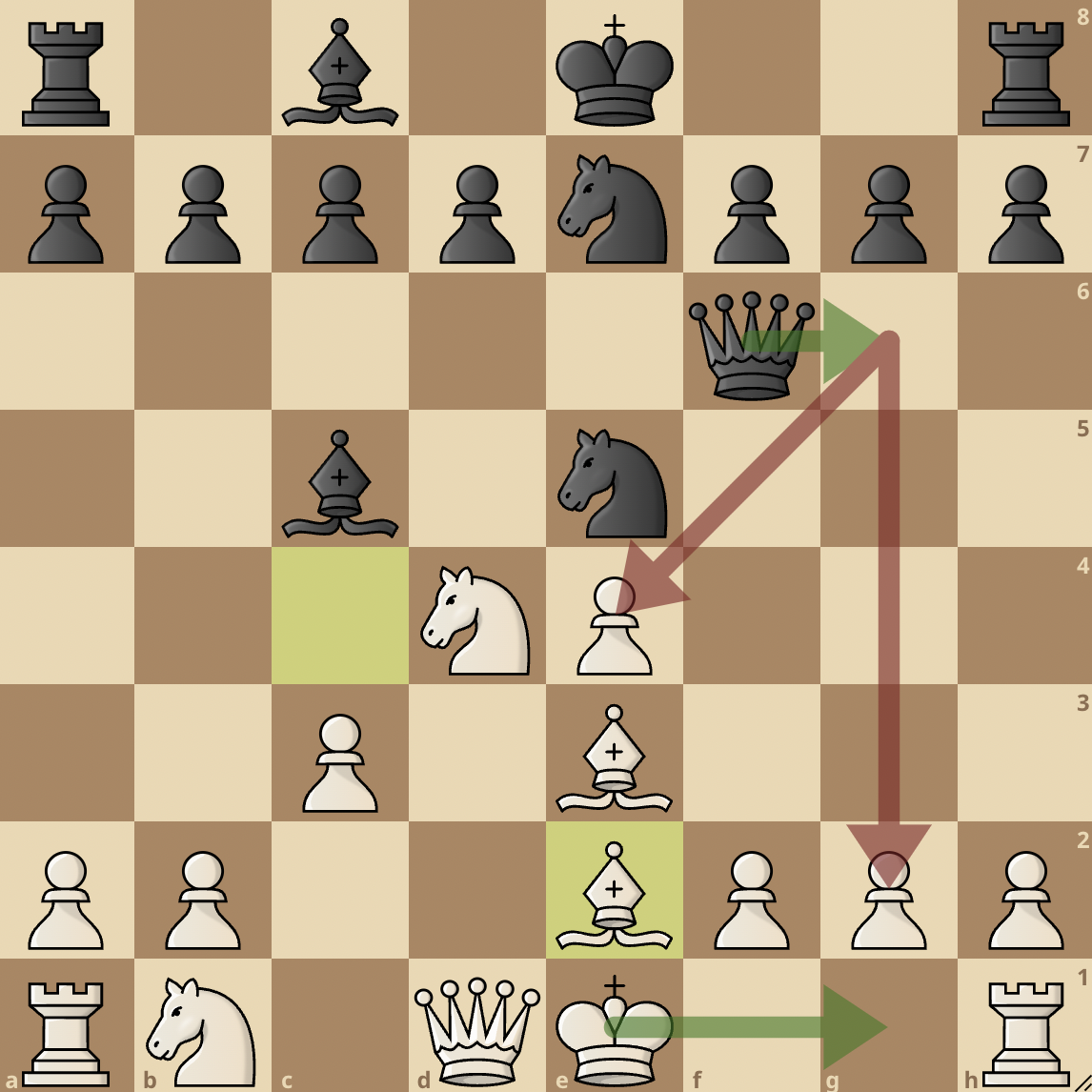
The popular continuation here is for Black to play 8…Qg6, attacking both the e4 and g2 pawns. Here, White castles with 9. 0-0 and gives up the e4 pawn.
However, if Black captures the e4 pawn with their queen, they allow White too much activity as White will develop their pieces with tempo, for example after ….Qxe4, White will play Nd2 and the queen has to move back. After the queen moves, White gets more chances to harass the queen with their bishops (e.g. Bh5) while also placing these bishops on excellent squares.
Therefore, capturing the e4 pawn is not usually a great idea. 9…d6 is the best move here, simply opening up their light-squared bishop’s line of attack. White now plays 10. f3, guarding their e4 pawn and Black castles with 10…0-0.
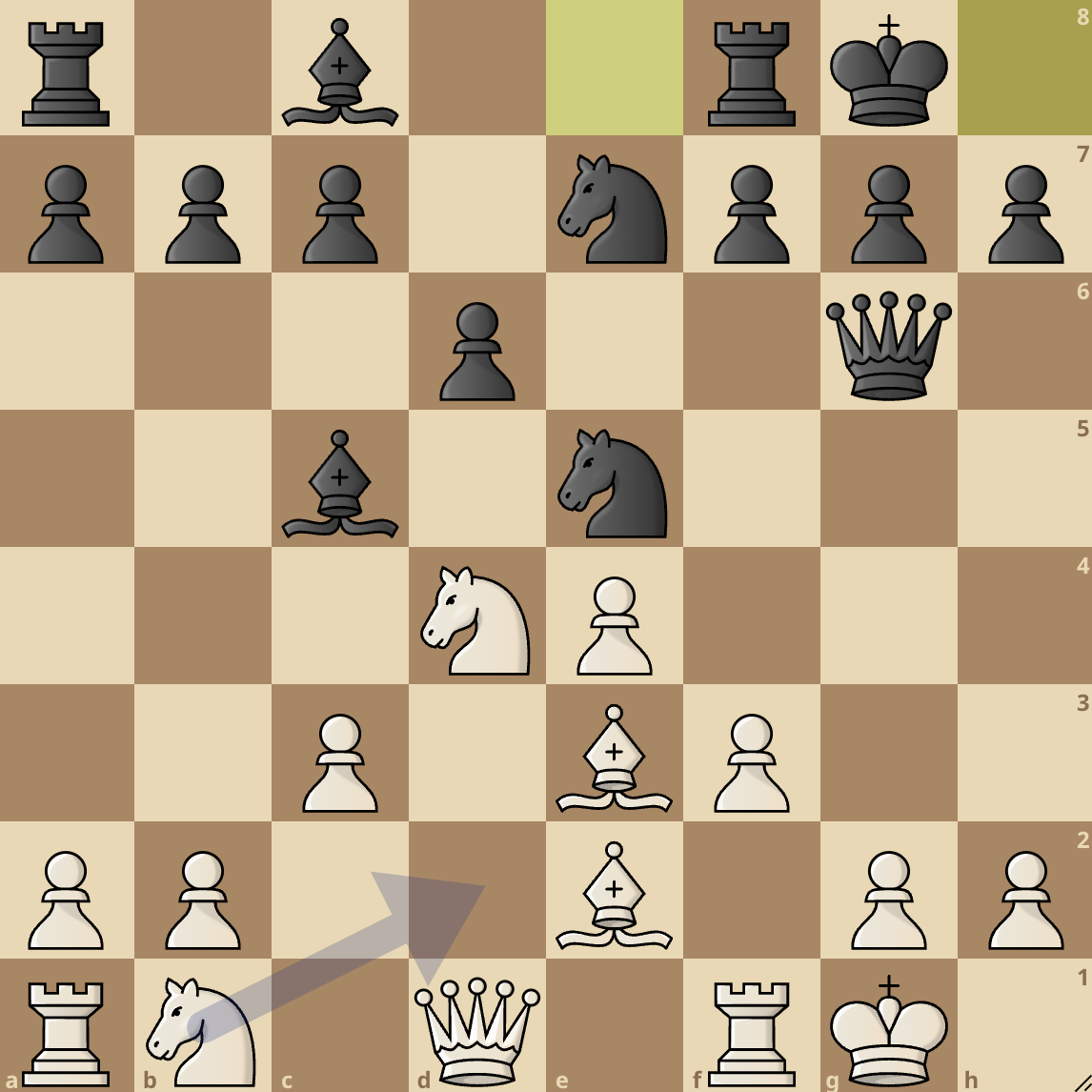
The game will continue with White having more control in the center and both players having the chance to go for attacks in the center and kingside.
Schmidt Variation
1. e4 e5 2. Nf3 Nc6 3. d4 exd4 4. Nxd4 Nf6
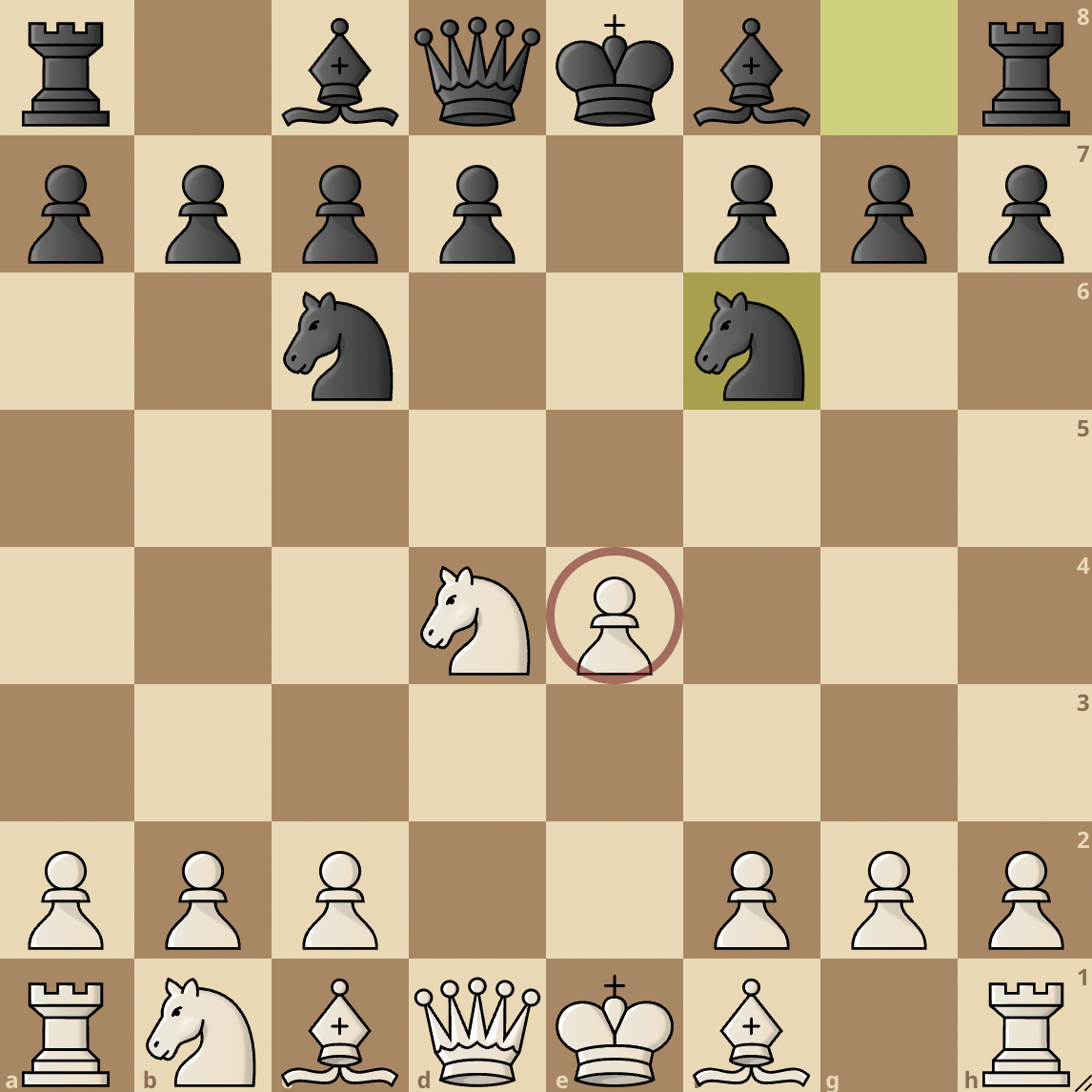
The Schmidt variation that starts with 4…Nf6 is the most-played line of the Scotch Game. In this variation, Black puts pressure on White’s e4 pawn and asks what their intentions are.
White usually continues with 5. Nxc6, capturing the c6 knight and giving Black doubled pawns. White in this variation will allow Black the chance of playing d5 in the future. Black will recapture with 5…bxc6.
From here White can choose the type of game they want to play. They can choose to play a positional and slow game by simply guarding their e4 pawn with Bd3 or play the more aggressive e5 which advances the pawn and attacks the knight. e5 usually leads to a more aggressive game. Anyways, both moves are good and they lead to interesting positions for both sides.
Scotch Gambit
1. e4 e5 2. Nf3 Nc6 3. d4 exd4 4. Bc4
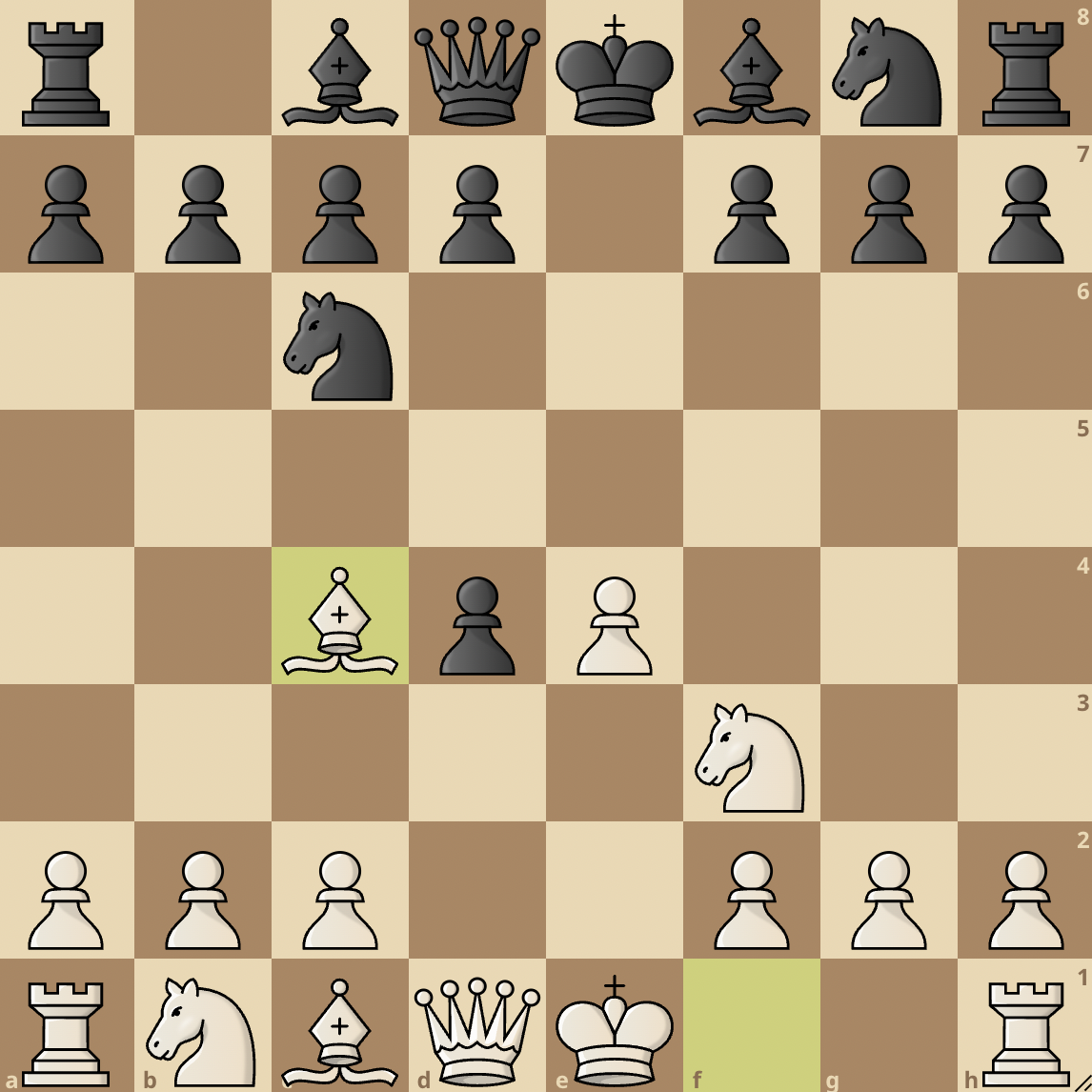
The Scotch Gambit is an interesting variation of the Scotch Game where White gives up a pawn early on to gain a lead in development and put pressure on Black’s position.
The most popular replies are …Nf6 and …Bc5.
4….Nf6

If Black chooses to go for 4…Nf6, White continues with 5. e5 attacking the f6 knight. Moving the knight is not a very good move as Black just developed it so Black instead counterattacks with 5…d5, making an attack on White’s light-squared bishop.
White then plays 6. Bb5, pinning the c6 knight, and now Black must move their f6 knight or risk losing it. Black plays 6…Ne4 and White captures the d4 pawn with 7. Nxd4.

With Nxd4, White regains their gambit pawn and they also put pressure on the c6 knight. White will have a good game in this variation.
4…Bc5
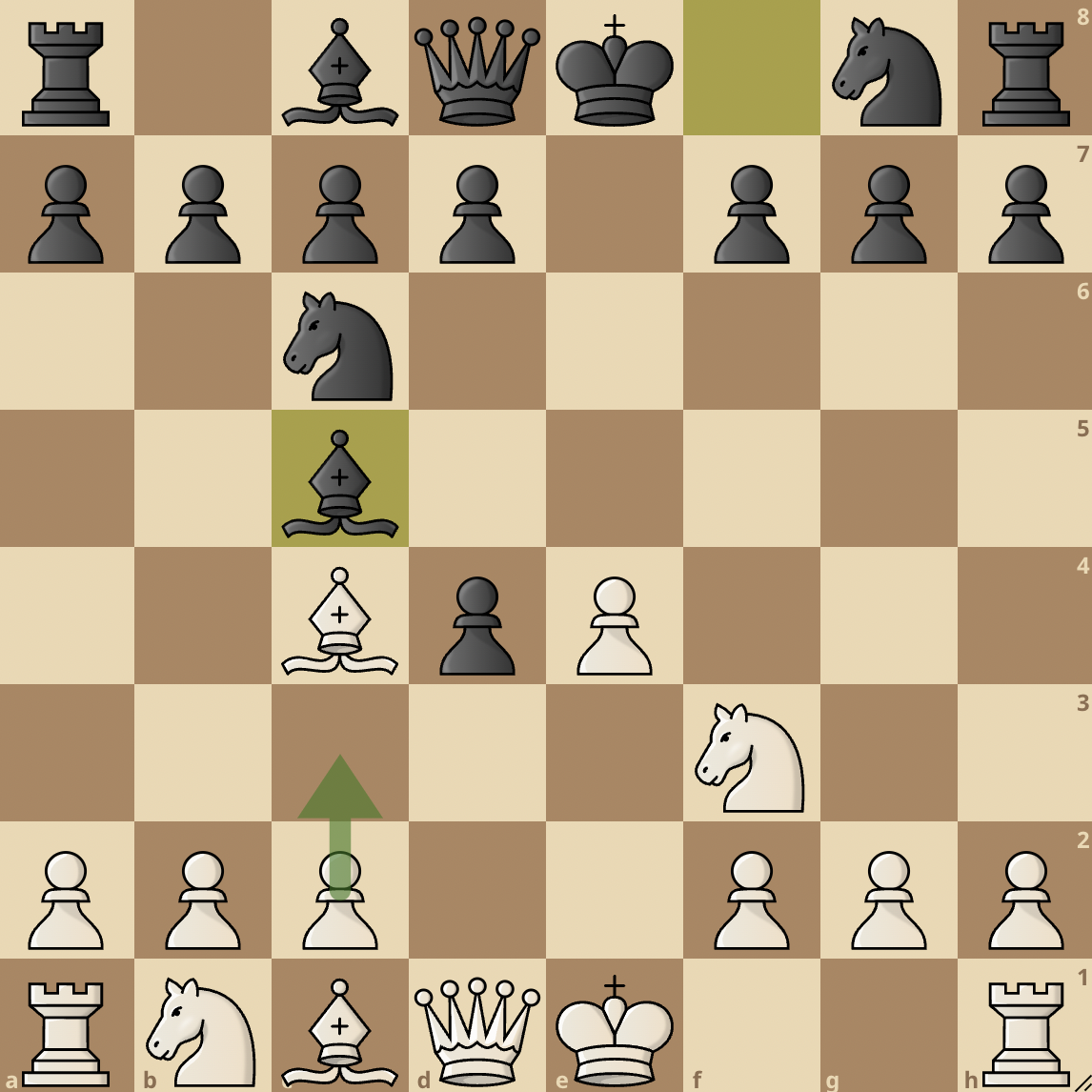
Black can also choose to continue with 4…Bc5. White will then play 5. c3, offering another pawn.
The best move for Black here is to play 5…Nf6 and the game continues in a similar way to the 4…Nf6 line after 6. e5 d5 7. Bb5 Ne4 and now White plays 8. cxd4, winning back the pawn and solidifying their e5 pawn.
However, If Black captures the c3 pawn, they allow White to go for an aggressive continuation with 6. Bxf7. This move immediately shatters the Black’s king’s defenses and the king is forced to recapture with 6…Kxf7.
By playing 6…Kxf7, Black also gives up their ability to castle. White now continues with Qd5+, checking the king, and after the king moves, White will capture the c5 bishop.
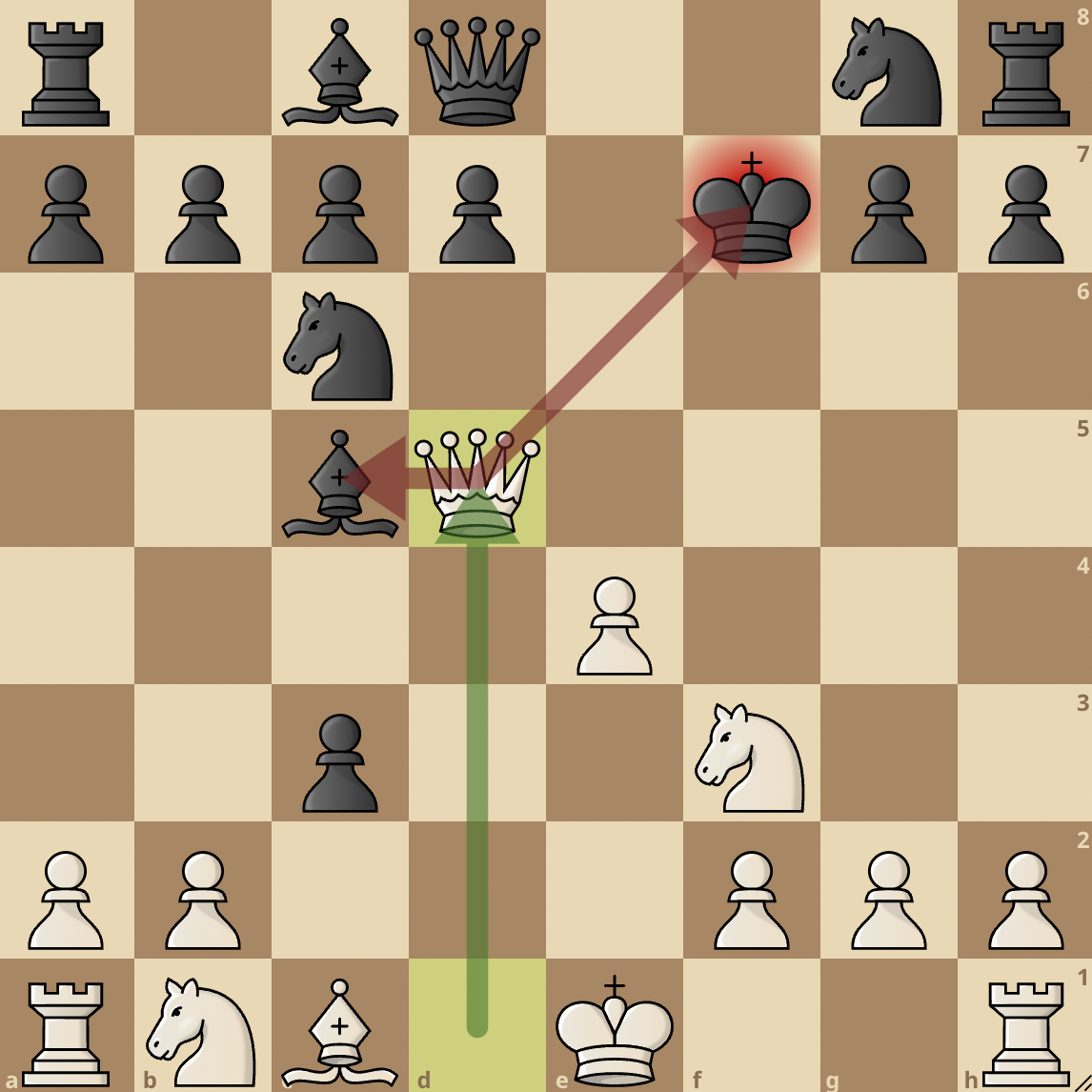
This variation allows White to blow open the black king’s defenses and get a better position with strong winning possibilities.
Goring Gambit
1. e4 e5 2. Nf3 Nc6 3. d4 exd4 4. c3
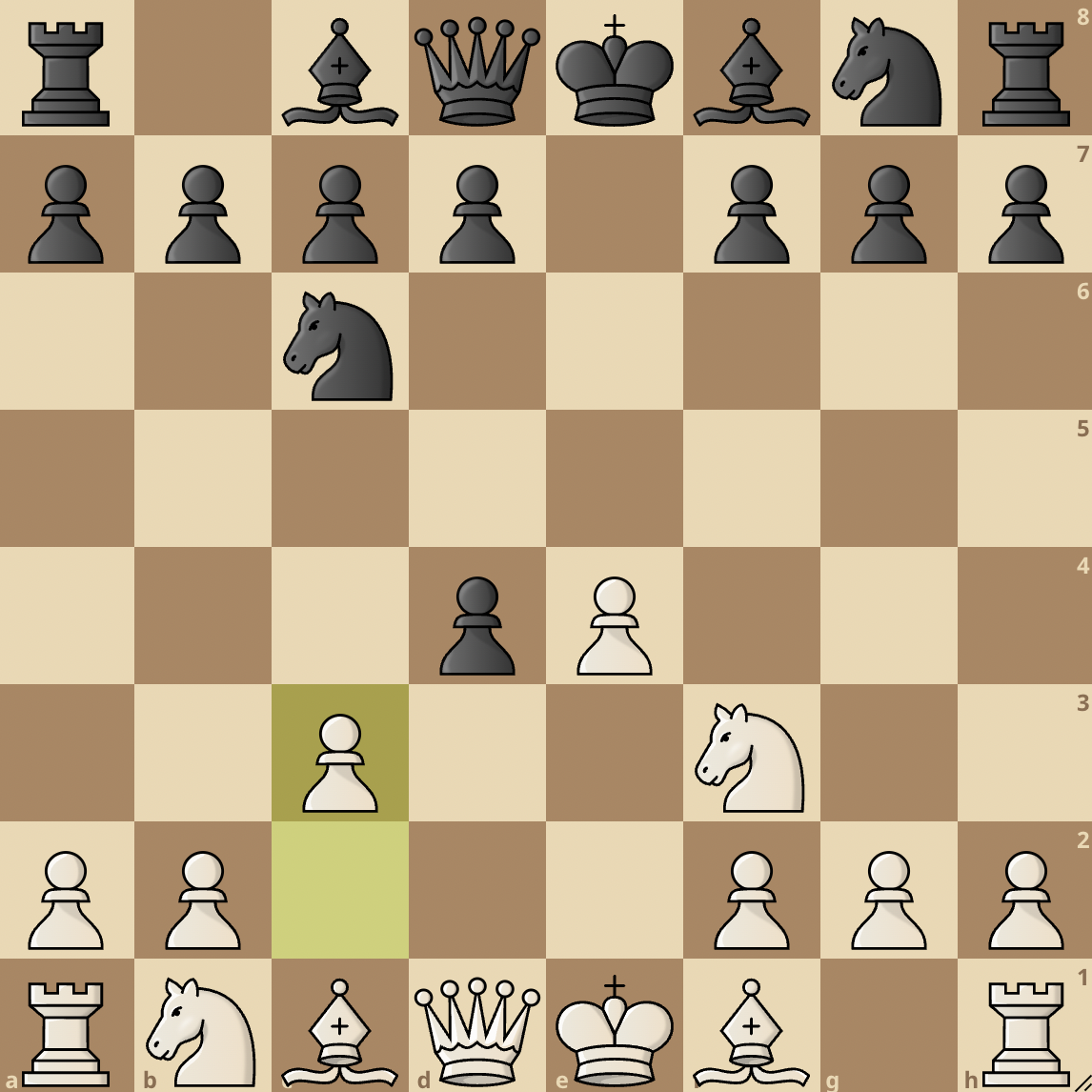
The Goring Gambit is an aggressive variation White employs to gain rapid development and a quick attack in the Scotch Game.
After Black captures the d4 pawn with …exd4, White does not immediately recapture but instead, they offer another pawn with 4. c3.
The idea behind this is that after Black captures the c3 pawn with 4…dxc3, White can quickly develop their b1 knight with 5. Nxc3. Black usually continues with 5…Bb4 and White plays 6. Bc4.
From here we can see that White has both knights developed and they can easily start an attack against the Black king. While the position here is equal according to engine analysis, the game is easier to play for White.
Malaniuk Variation
1. e4 e5 2. Nf3 Nc6 3. d4 exd4 4. Nxd4 Bb4+
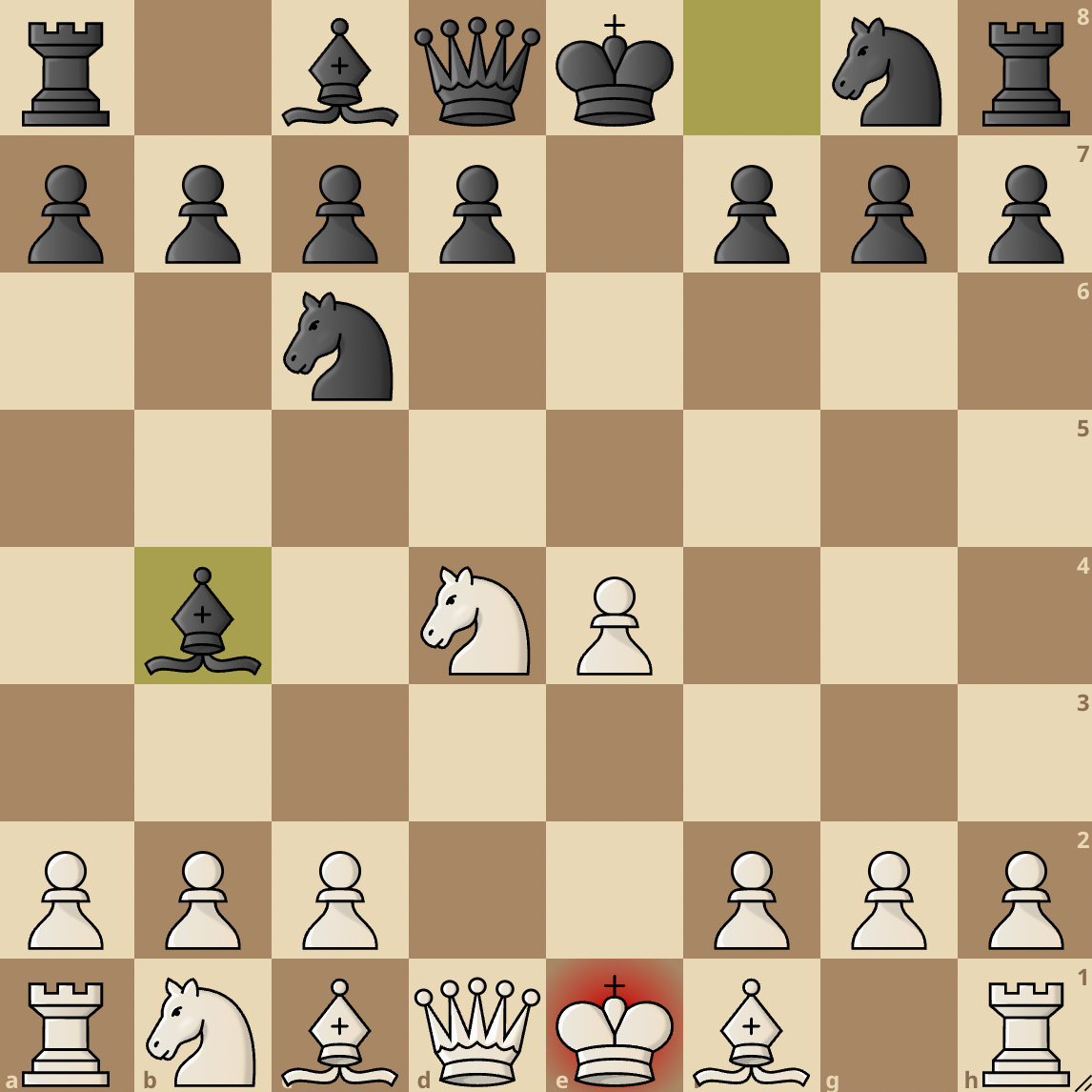
The Malaniuk variation is a way for Black to hamper the quick development of White’s b1 knight in the Scotch Game. After 4. Nxd4, Black plays 4…Bb4+, provoking the move 5. c3 by White.
White plays c3 since playing Nc3 would not be ideal as Black would capture the knight and destroy the pawn structure on the queenside. After c3, Black retreats their bishop with 5…Bc5. White then continues with 6. Be3 and Black plays 6…Bb6.
White then plays 7. Nf5, offering an exchange of dark-squared bishops. Black obliges with 7…Bxe3 and White recaptures with 8. Nxe3.

From this position, we can see that White has a firm grip on the d5 square and they can start developing their pieces to fight for more advantage in the position.
Successful Deployments
Touch the moves or move the board around for a better interactive experience.
Garry Kasparov v Anatoly Karpov, Interpolis 15th (1991)
Kasparov and Karpov are two players who marked an era in chess with their intense rivalry. The pair clashed on numerous occasions and when they met at the Interpolis tournament of 1991, it was Kasparov who picked up the win using the Scotch Game to great effect.
Magnus Carlsen v Peter Leko Pearl Spring Chess Tournament (2009)
Magnus Carlsen and Peter Leko are both big personalities in the world of chess. Carlsen is a former world champion and the highest rated chess player while Leko is an insanely strong grandmaster who has coached numerous chess talents. When the pair met back in 2009 at the Pearl Spring Chess Tournament, Carlsen employed the Scotch Game and came out on top.
Magnus Carlsen v Dmitry Jakovenko, World Blitz Championship (2009)
While the Scotch Game is a very strong opening choice for White, it is not invincible and Dmitry Jakovenko proved just that by defeating Magnus Carlsen with the Black pieces in the 2009 World Blitz Championship.





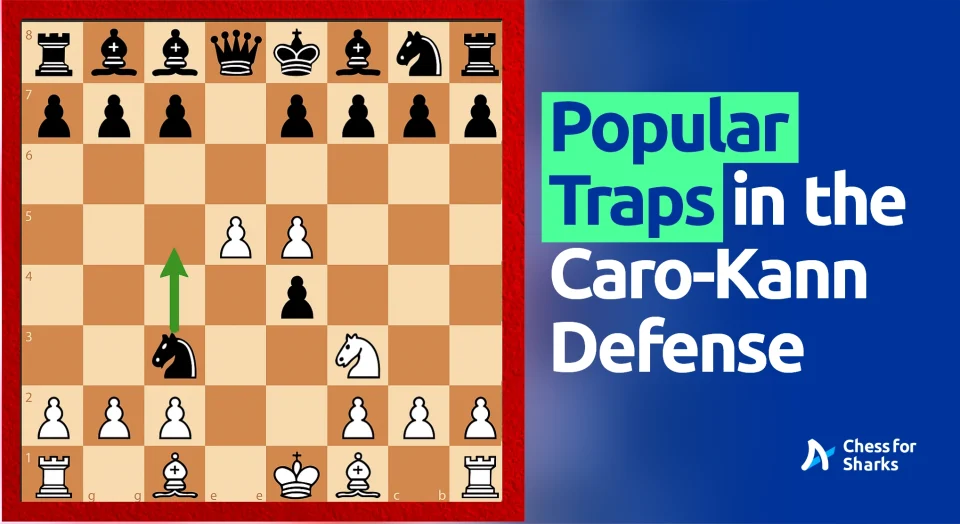

join the conversation